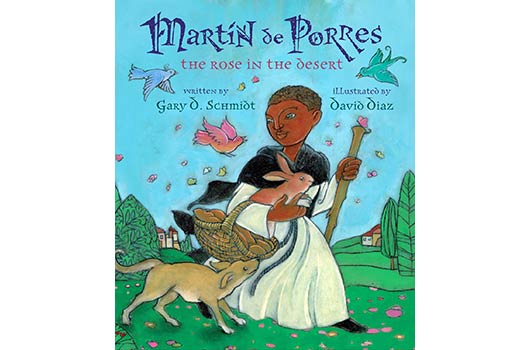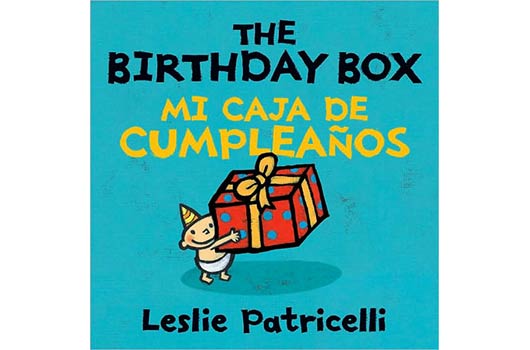
Martín de Porres, The Rose of the Desert
By Gary D. Schmidt • Illustrated by David Diaz
Clarion Books • 2012 • 32 pages
ISBN 978-0-547-61218-8
Hardcover ($16.99)
Ages 6 and up
Martín de Porres was the child of a black slave and a Spanish conquistador in 17th century Peru. He lived a life of extreme poverty and faced prejudice along with his mother and sister Juana. It was not until he was eight, and his father returned from Ecuador to witness the dreadful conditions that his children were living in that he took them in, and gave them his name. He placed Martín as an apprentice to a cirujano (surgeon) who taught him how to set bones, treat wounds, and cut hair.
He wanted to be a priest but was not allowed to because of his mixed heritage. The Monastery of the Holy Rosary accepted him as a servant, but the priests soon noticed that many people, especially the poor, came to him for help with their illnesses. After thirteen years of hearing about his miraculous healings, Father Lorenzana allowed him to take his vows as a priest. It was at that time that the Father claimed that Martín was not a mongrel, not a son of a slave, but “a rose in the desert.”
Read Related: Heroes & Great Books to Help Kids Celebrate Hispanic Heritage Month
For forty-five years, Martín continued performing miraculous healings. In 1837 he was beatified, and then canonized in 1962, making him the first black saint of the Americas. Today, he is known as the saint of interracial relations, social justice, those of mixed heritage, public education, and animal shelters. Caldecott Award winner David Diaz uses earthy tones to depict the architectural designs of the 17th century as he follows Martín through his journey into sainthood. Children may not necessarily notice, but Martín’s facial features, particularly his nose, are not quite consistent throughout the book. However, this does not take away from the beauty of the illustrations, and children will enjoy reading about this lesser-known saint.
—Reviewed by Dr. Veronica Covington, School of Information, University of Texas, Austin











